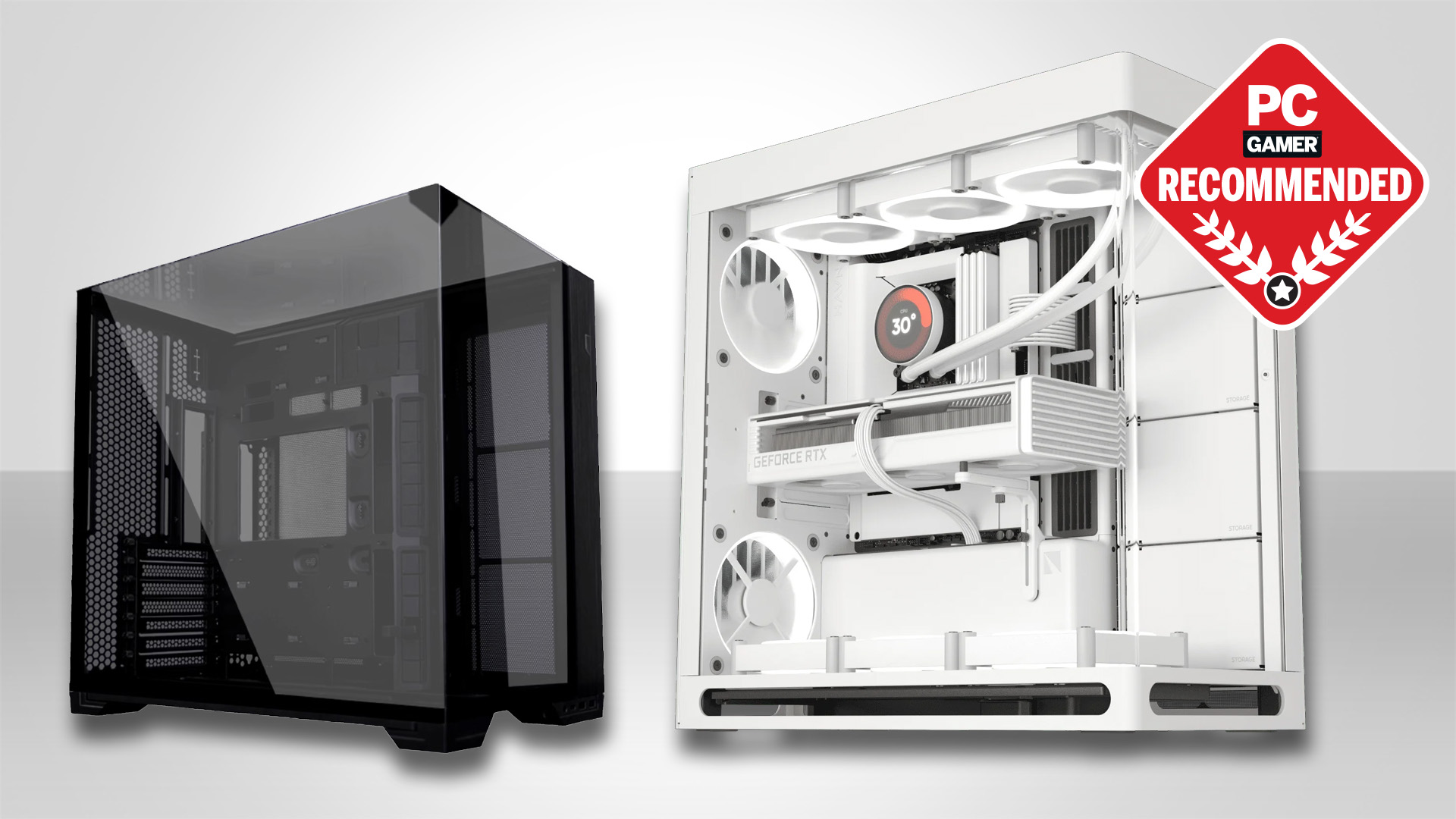The Corsair Air 5400 offers such a clever and unique approach to CPU cooling, I'm surprised no one did it sooner
This case has triple chambers, but not in the way you might imagine.
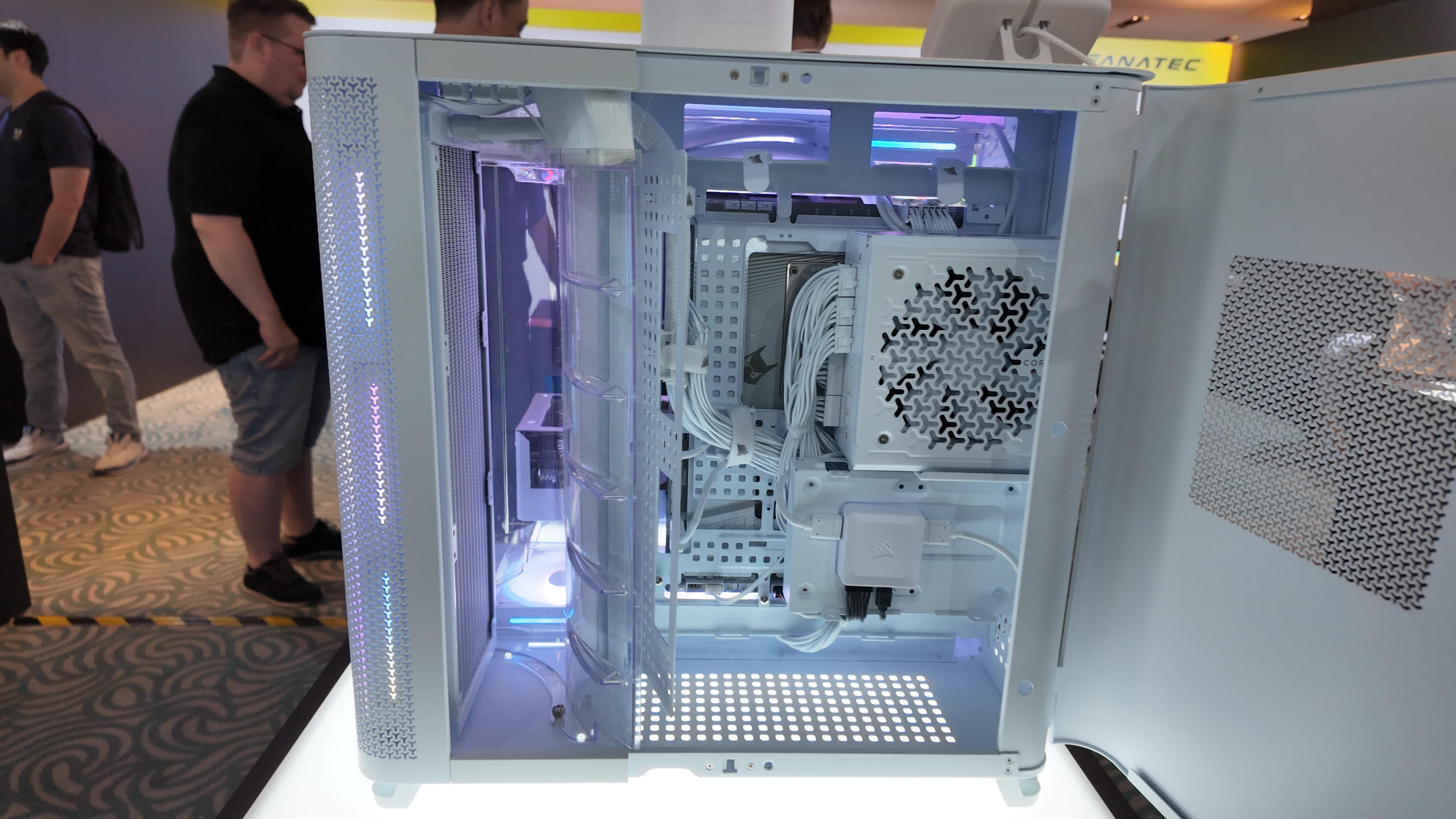
Corsair has created what it holds to be the first triple-chamber PC case. One chamber for the parts, one chamber for the PSU and cables, and one special chamber that only houses a 360 mm radiator. This is designed to get the hot air out of your case as quickly as possible, without heating up any other components.
From one side of the Air 5400, it looks more or less like a fishtank-style chassis, with a glass front and side panel to showcase the parts inside. It features top and bottom fan mounting locations, essentially forming a chimney of cool air over your components, like a few other popular cases of this style.
However, it does differ to others in that Corsair tells me it's harnessing certain concepts of the Venturi effect, the same used by modern F1 cars to keep them glued to the track, to speed up the airflow through the case.
I'm not sure how much of that Venturi effect stuff is marketing or science but it has installed plastic housing for the top and bottom mounted fans that shrink at the edge to, presumably, aid in the pressure/speed change that the Venturi effect would produce.
This Venturi design determines this case to only use 120 mm fans, but that's no big issue if all Corsair's promises for top-notch cooling are true.
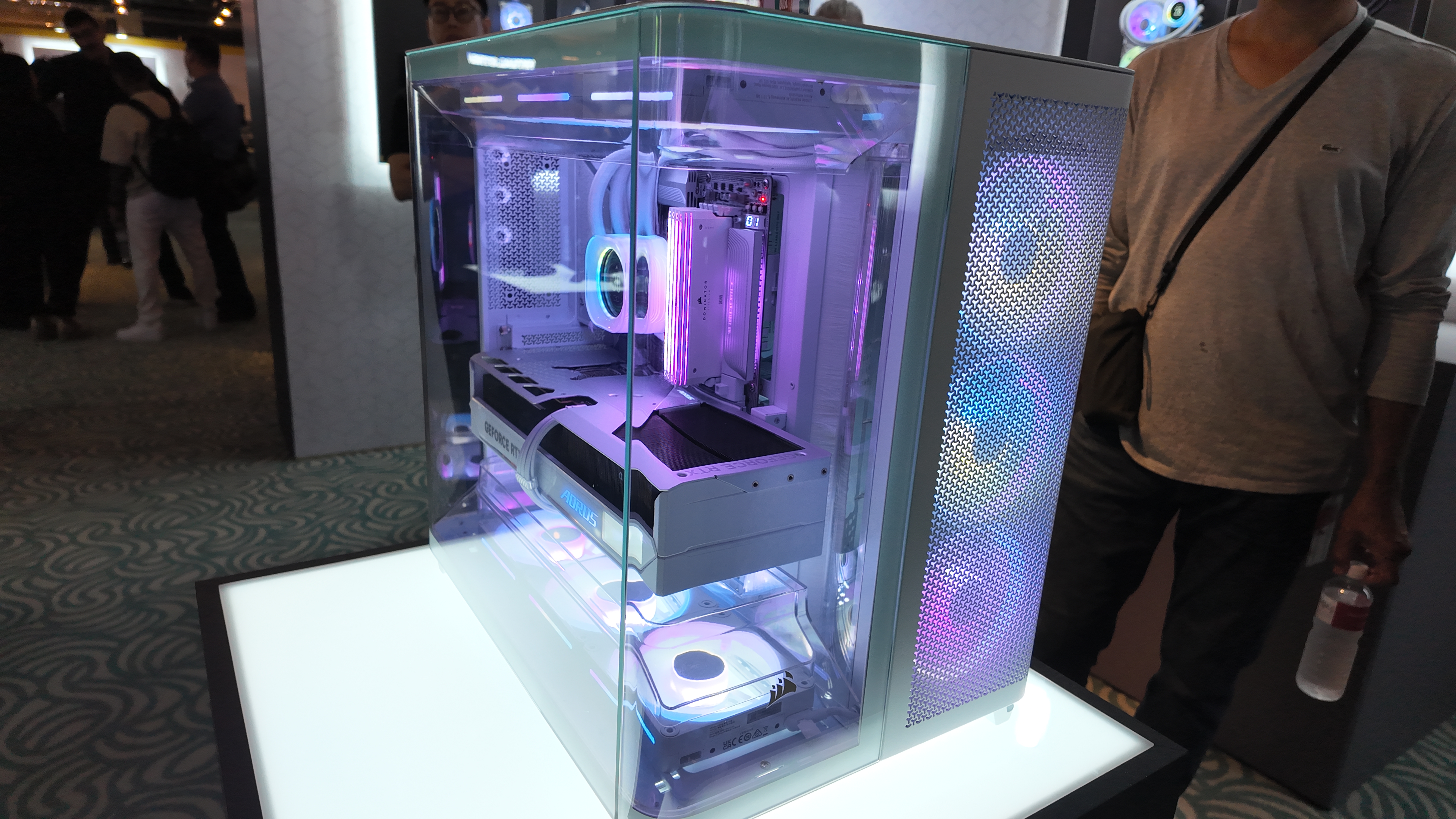
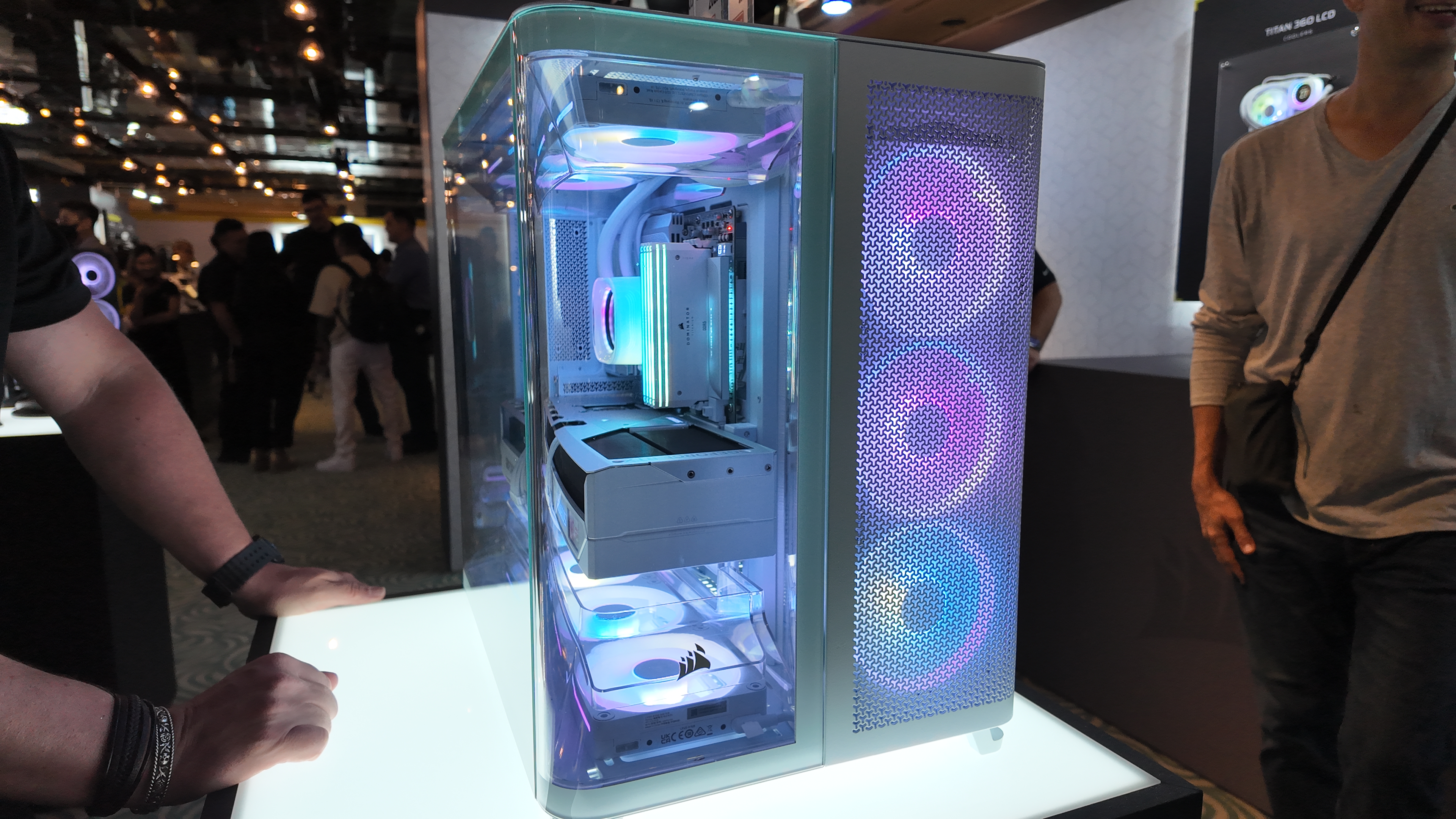
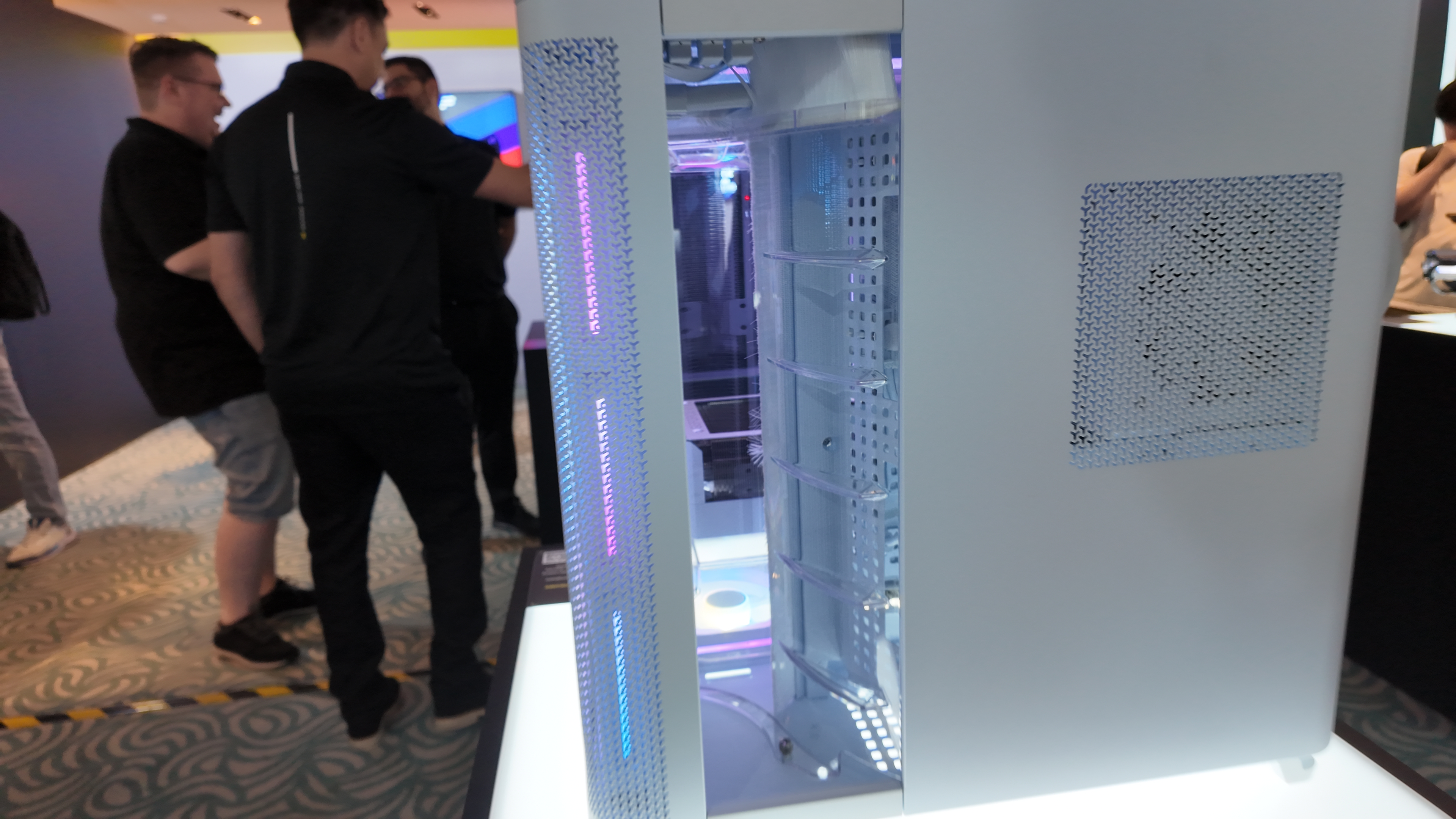
As a fan of the original Air 540, it's no surprise I love the look here, and the glass and mesh two-tone front panel looks smart. But there's more to this design that aesthetics. Turn the case around to the side and that's where things really get interesting.
Behind the front panel mesh is a 360 mm radiator. This is the AiO for the CPU and it's located in its own special chamber, away from the rest of the components. The tubes going between the radiator and CPU are pushed through a brush, rather than a rubber grommet, to keep the hot air separated from the rest of the case.
Keep up to date with the most important stories and the best deals, as picked by the PC Gamer team.
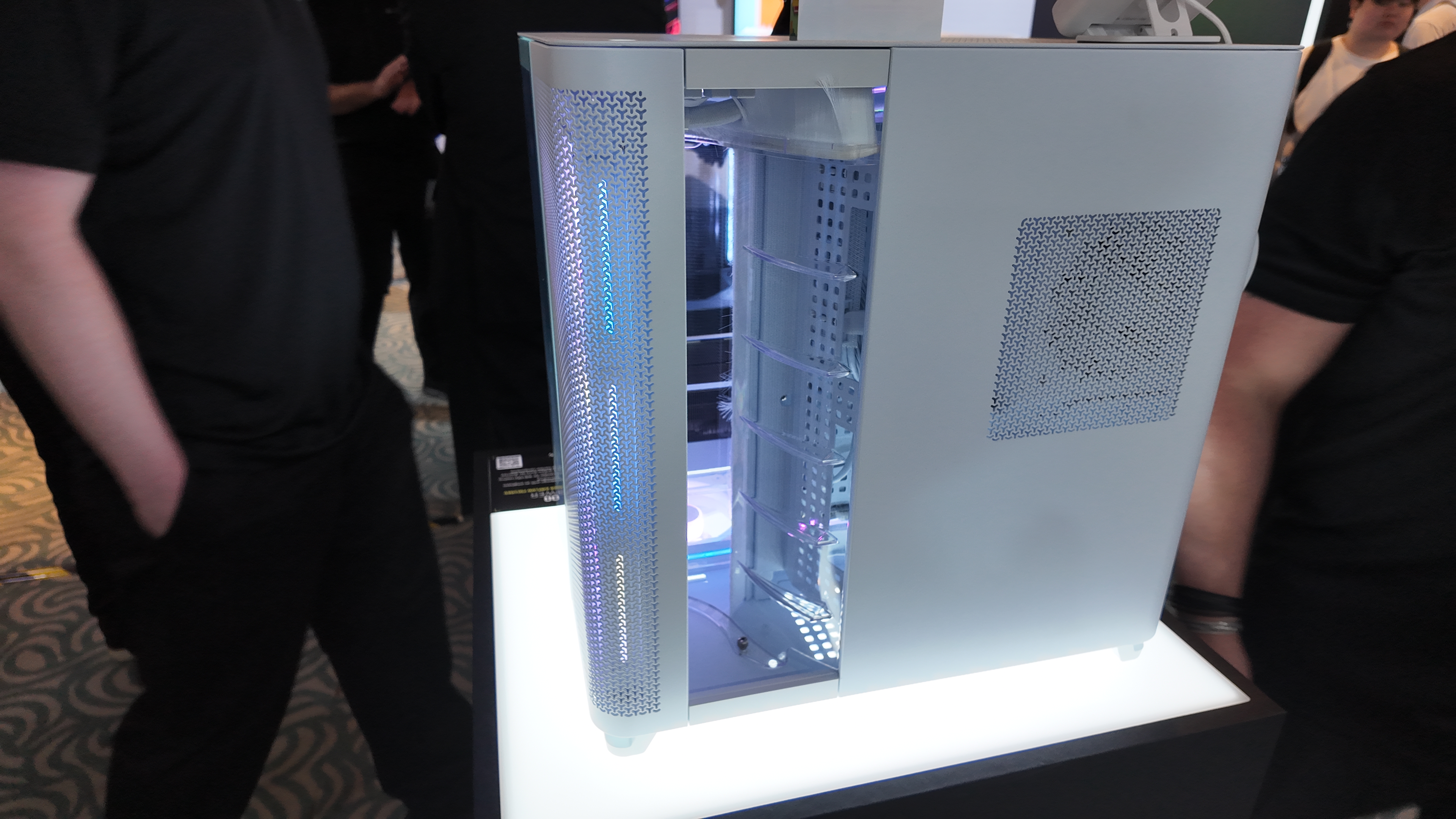
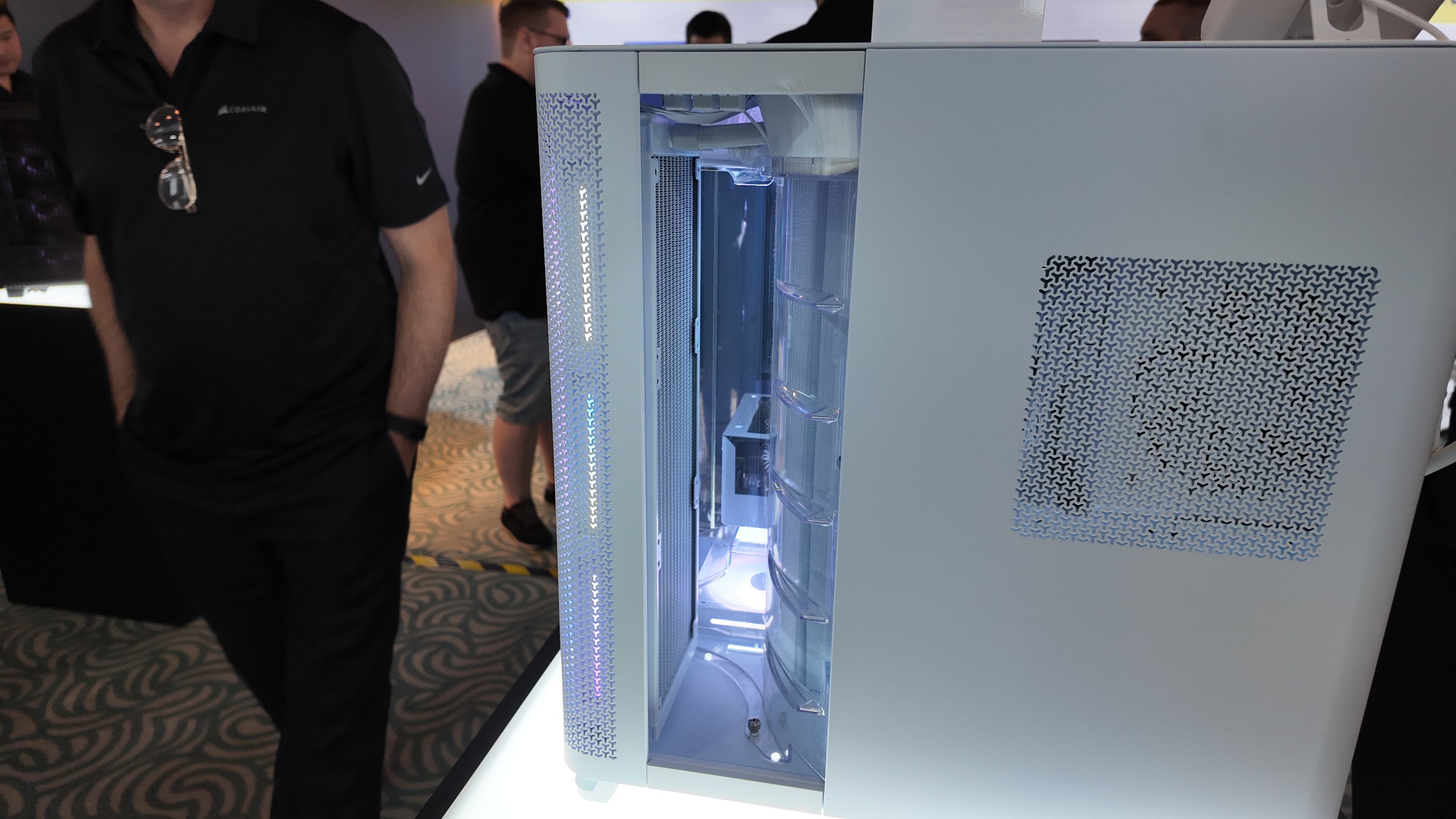
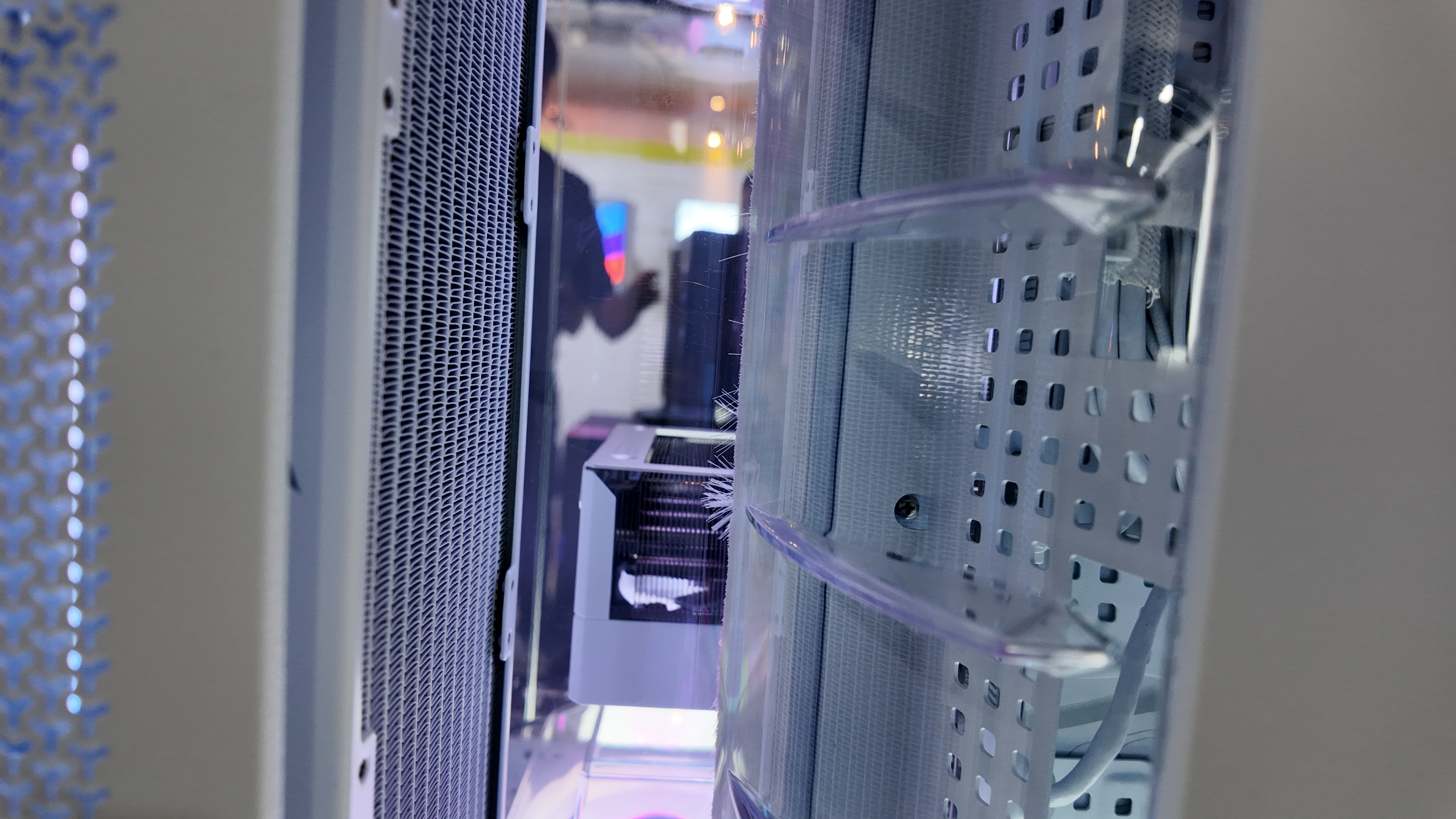
Look to the side panel and you'll noticed a gap where the side panel should be at the front of the case. This is a side chamber, the rare third chamber of this chassis, and has what can most easily be described as a plastic diffuser—again with the race car lingo—installed within. This is designed to throw the hot air from the radiator out from the side of the case and away from your other components.
That's nearly enough excitement for one PC case, but peel away the side panel and the PSU and rear of the motherboard tray are revealed.
Corsair has introduced a new mounting system for cables around the rear of the case, and it's essentially a pegboard for your PC. It has specialised cable holders that clip into the holes surrounding the motherboard plate, but you can just as easily attach cables with a couple zip-ties. It's a little more aesthetically pleasing than a couple straps, though you will have to be more purposeful with your cable runs and planning to really make the most of it.

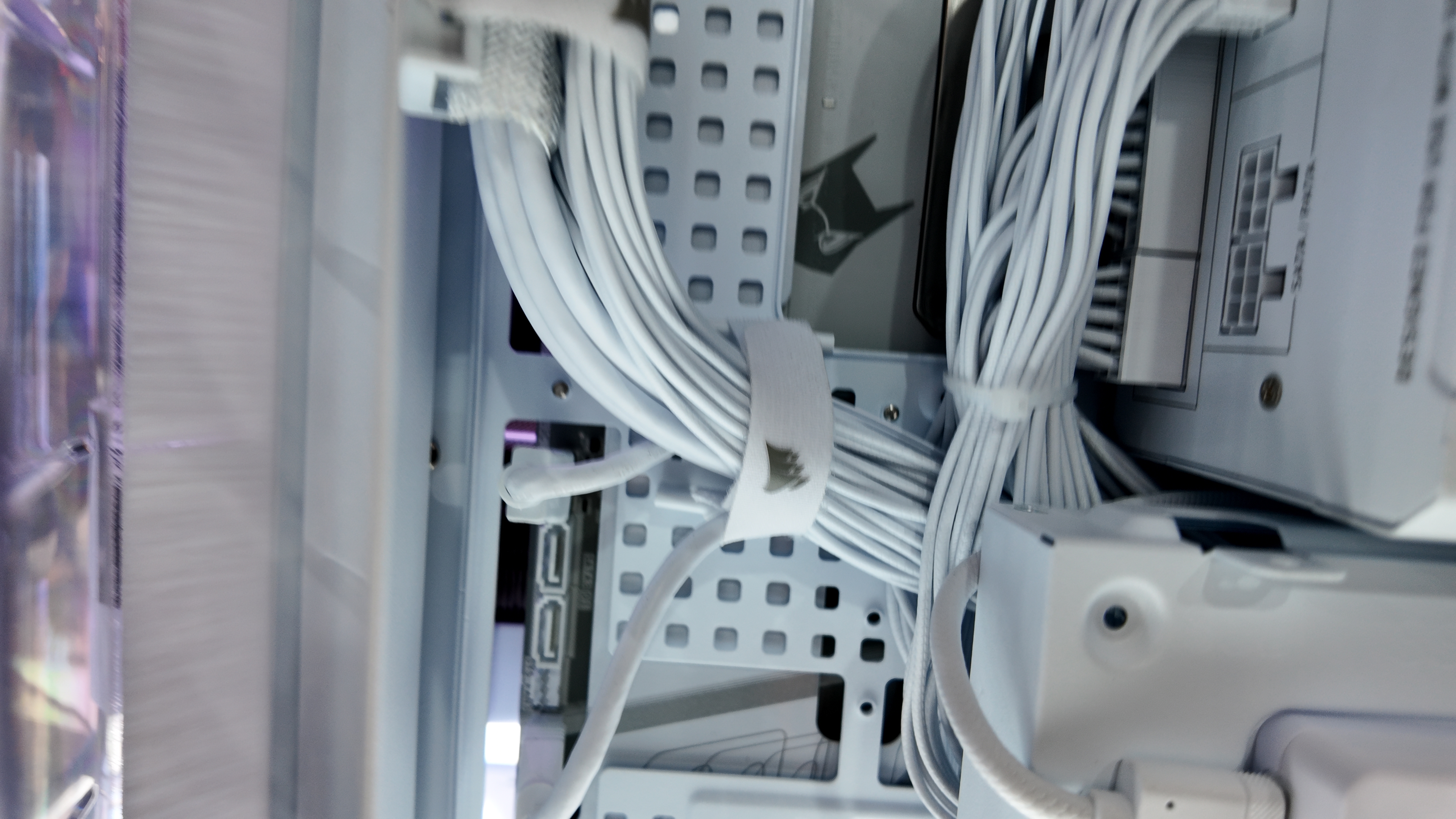

Catch up with Computex 2025: We're stalking the halls of Taiwan's biggest tech show once again to see what Nvidia, AMD, Intel, Asus, Gigabyte, MSI and more have to offer.
This new cable management system/tray is also on the new Frame 5000D, which is a step-up from the Corsair Frame 4000D I reviewed last month. And good news there, too. The Frame 4000D will be getting a slight iteration with thicker sheets of metal, which should help with some of the flex that I reported in my review.
One last thing. The Air 5400 only features Type-C USB ports on its front panel IO. No more Type-A, and I'm told we might see more of that as EU regulation takes hold and boots Type-A to the curb.
With all that, the Air 5400 is shaping up to be a bit of a beast. I'm certainly hoping to take a look at one, as a fan of its spiritual predecessor, or at least I assume, the Air 540. Though one slight down note to end on is that this remains a concept for now. I got vaguely positive vibes for its eventual release, but I wonder if we'll see things like the Venturi fan shrouds make it into the shipping product, if there indeed ever is one.

Jacob earned his first byline writing for his own tech blog, before graduating into breaking things professionally at PCGamesN. Now he's managing editor of the hardware team at PC Gamer, and you'll usually find him testing the latest components or building a gaming PC.
You must confirm your public display name before commenting
Please logout and then login again, you will then be prompted to enter your display name.
